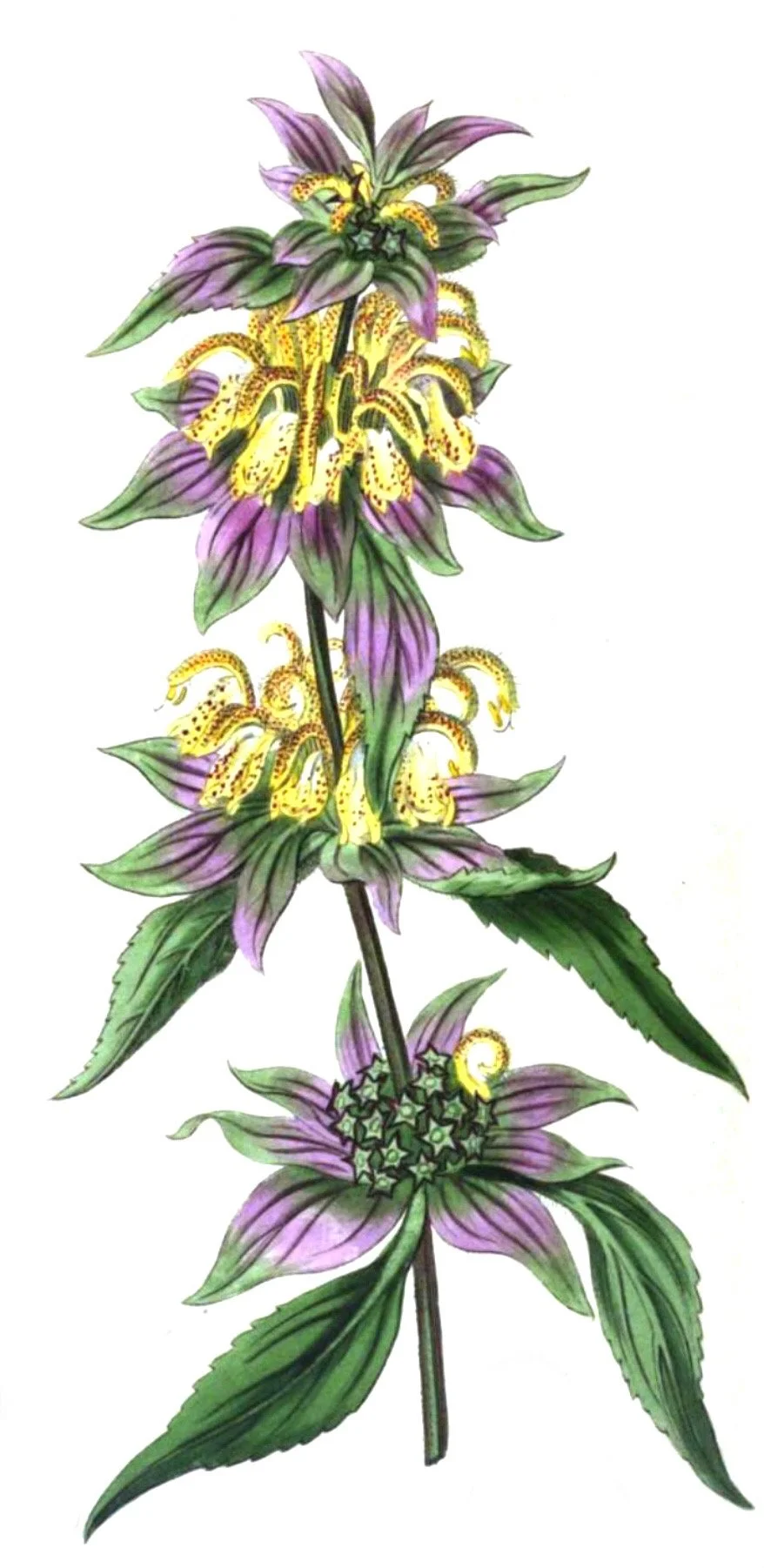Spotted Bee Balm
Spotted Bee Balm
SPOTTED BEE BALM SEEDS
Monarda punctata
Endemic to North America, the genus Monarda boasts many useful and beautiful species. Though relatively uncommon, Spotted Bee Balm is a valuable addition to any garden, providing forage for polliators and a gentle medicine for humans.
Rich in thymol and a powerful febrifuge, a weak hot or cold infusion of the leaves may be used both topically and internally in the treatment of fever and headache. This same preparation is also gently antiemetic and soothing to upset tummies. The Meskwaki of the Great Lakes employed this species as a medicinal snuff, although we don't necessarily recommend this.
Attractive plants grow to around 2' in all directions and prefer rocky well-drained but fertile soils in full sun. Ample water in the spring is ideal. Established plants will tolerate summer drought. Produces tons of flowering stems and blooms over several weeks in summer, with pretty white or pale pink whorled bracts persisting into autumn. Easy and absolutely deerproof.
Seeds may be sown outdoors in spring, but we prefer to start plants indoors. Press seeds into moist soil, barely dusting with additional soil or fine vermiculite, and mist generously. Cover with plastic to maintain moisture and temperature. Kept warm (around 70°F) and moist in bright light, seeds begin to germinate within two weeks or so. Once germination begins, uncover promptly. Prick out seedlings with true leaves to grow on in individual pots in bright light at warm room temperature. Avoid overwatering. Harden off before transplanting outdoors in warm loose soil in spring. Do not plant into cold wet muddy soils. Drainage is key to keeping this species happy. Water just until established.
Spotted Bee Balm is a short-lived perennial. Started early enough, plants will sometimes bloom late in the first year. They will always bloom in the second and usually the third year. They tend to disappear in the fourth or fifth year. Allowing these plants to self-sow is advised, as is starting new plants to tuck in every year or two if you wish to have this plant in your landscape consistently.
Packet contains at least 100 seeds.
